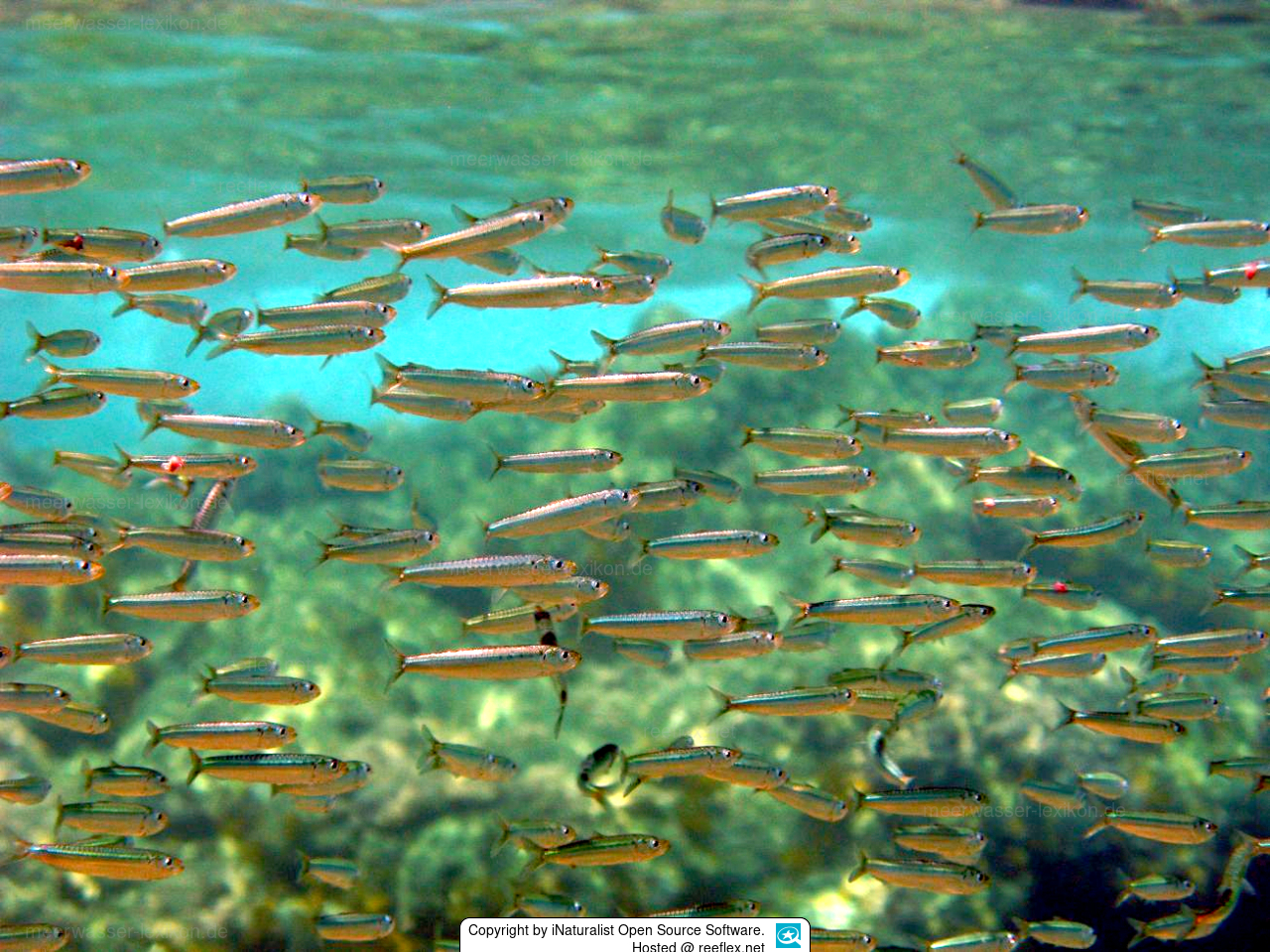Info
Sardina pilchardus is a pelagic, oceanodromic and subtidal species, this large sardine forms schools that usually stay at depths between 25 and 55 or even 100 meters during the day and ascend to 10 to 35 meters at night to hunt ascending zooplanton.
The European sardine feeds mainly on planktonic crustaceans and also on larger organisms.
Sardina pilchardus is a migratory fish and normally a cold-water species; its maximum age is around 15 years.
Sexual maturity occurs in the second and third year of life and the length at first sexual maturity is estimated at 14.8 cm.
The generation time can be around five to six years, the spawning time is different for the subpopulations in the Mediterranean and the Black Sea.
In the Mediterranean, the species spawns from September to June, with a peak in the fall. In the Black Sea, on the other hand, it spawns from June to August.
Spawning takes place in the open sea or near the coast, with 50,000 - 60,000 eggs being produced per female, each egg having a diameter of 1.5 mm.
Within the food chain, schooling fish such as sardines or herrings play an important "role" as prey fish; whales, dolphins, tuna, sharks and various seabirds are on these easy-to-capture animals.
Humans have also specialized in sardines and fish them commercially.
Synonyms:
Alosa pilchardus (Walbaum, 1792)
Alosa sardina (Risso, 1827)
Arengus minor Cornide, 1788
Clupanodon sardina Risso, 1827
Clupea harengus pilchardus Walbaum, 1792
Clupea laticosta Lowe, 1843
Clupea pilchardus Bloch, 1795
Clupea pilchardus Walbaum, 1792
Clupea pilchardus sardinia
Clupea sardina Cuvier, 1829
Clupea sardinia Cuvier, 1829
Sardina dobrogica Antipa, 1904
Sardina pilchardus sardina (Risso, 1827)
The European sardine feeds mainly on planktonic crustaceans and also on larger organisms.
Sardina pilchardus is a migratory fish and normally a cold-water species; its maximum age is around 15 years.
Sexual maturity occurs in the second and third year of life and the length at first sexual maturity is estimated at 14.8 cm.
The generation time can be around five to six years, the spawning time is different for the subpopulations in the Mediterranean and the Black Sea.
In the Mediterranean, the species spawns from September to June, with a peak in the fall. In the Black Sea, on the other hand, it spawns from June to August.
Spawning takes place in the open sea or near the coast, with 50,000 - 60,000 eggs being produced per female, each egg having a diameter of 1.5 mm.
Within the food chain, schooling fish such as sardines or herrings play an important "role" as prey fish; whales, dolphins, tuna, sharks and various seabirds are on these easy-to-capture animals.
Humans have also specialized in sardines and fish them commercially.
Synonyms:
Alosa pilchardus (Walbaum, 1792)
Alosa sardina (Risso, 1827)
Arengus minor Cornide, 1788
Clupanodon sardina Risso, 1827
Clupea harengus pilchardus Walbaum, 1792
Clupea laticosta Lowe, 1843
Clupea pilchardus Bloch, 1795
Clupea pilchardus Walbaum, 1792
Clupea pilchardus sardinia
Clupea sardina Cuvier, 1829
Clupea sardinia Cuvier, 1829
Sardina dobrogica Antipa, 1904
Sardina pilchardus sardina (Risso, 1827)







 iNaturalist Open Source Software
iNaturalist Open Source Software

